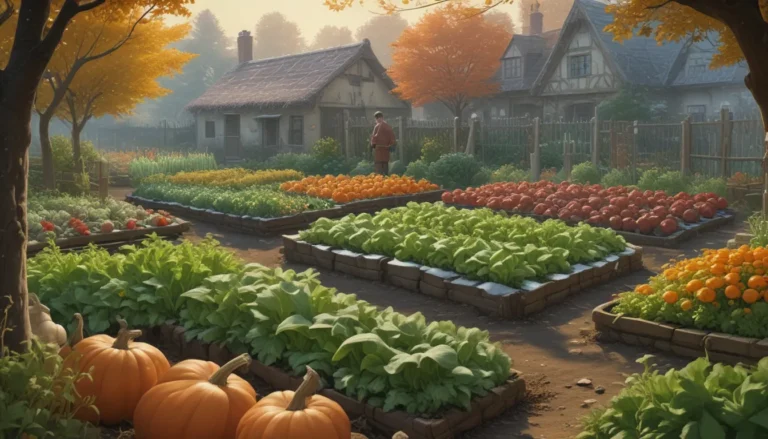How to Cultivate and Tend to Yew Trees and Shrubs

Taxus spp.
Have you ever come across a plant that seemed unassuming to most but left you mesmerized? If so, then you’re well-acquainted with the world of plant enthusiasts, also known as plant geeks.
Among the myriad of flora that captivate the hearts of plant lovers, yews stand out thanks to their ornamental beauty, historic significance, and even their deadly toxicity. It’s like someone combined all the best qualities of plants into one species!
In this comprehensive guide, we’ll delve into the captivating world of the Taxus genus, encompassing the history, cultivation, maintenance, and more of yew trees and shrubs. So let’s dig in and uncover the secrets of these fascinating plants!
What You’ll Learn
- What Are Yews?
- Cultivation and History
- Propagation
- How to Grow
- Growing Tips
- Pruning and Maintenance
- Species and Cultivars to Select
- Managing Pests and Disease
- Best Uses
- Quick Reference Growing Guide
What Are Yews?
Belonging to the Taxaceae family, the Taxus genus consists of a few evergreen coniferous tree and shrub species known as yews. These plants are characterized by their reddish bark, dark green lance-shaped leaves, and red arils that contain highly poisonous alkaloids.
Yews have a rich history, dating back millions of years and holding significant mythical and cultural value. They were revered by ancient civilizations and even used in the production of traditional weapons and medicines.
Cultivation and History
Yews are distributed across various regions globally and span a vast history, with some trees believed to be thousands of years old. They have been associated with ancient goddesses, used for their symbolic significance, and even played a role in modern medicine as a source of anti-tumorous compounds.
Yews hold a special place in history, embodying the essence of life, death, and rebirth. From ancient rituals to modern advancements, yews continue to amaze with their versatility and significance.
Propagation
Growing yews from seeds can be time-consuming, with propagation from cuttings being a more efficient method. By taking semi-hardwood cuttings and using a rooting hormone, you can propagate yews successfully. Transplanting established yews is also an option for those looking for quicker results.
From Cuttings
Taking cuttings in late summer or early autumn, treating them with rooting hormone, and planting them in well-draining soil can result in new yew plants. With proper care, these cuttings will develop into healthy plants ready for transplantation.
Via Transplanting
For faster results, transplanting established yews from nurseries or vendors can be a convenient option. Choosing the right planting site and following proper transplanting techniques ensures the successful establishment of yews in your garden.
How to Grow
Providing yews with ideal growing conditions is essential for their health and vigor. From climate and exposure needs to soil requirements and irrigation, ensuring that yews receive proper care will result in flourishing plants.
Climate and Exposure Needs
Understanding the climate requirements of specific yew species is crucial for their growth. Yews thrive in full to partial sun, with well-draining soil and protection from harsh winds. Adhering to these guidelines will help yews reach their full potential.
Soil Needs
Maintaining excellent soil drainage and fertility is vital for the healthy growth of yews. While they tolerate various soil textures, ensuring proper drainage and acidity levels promotes optimal growth and longevity.
Irrigation and Fertilization Needs
Regulating watering to prevent waterlogging and providing fertile soil ensures the well-being of yews. A balance of moisture and nutrients promotes vigorous growth and prevents issues such as root rot and leaf discoloration.
Growing Tips
- Protect yews from strong winds and ensure excellent drainage.
- Water only when the top layer of soil is dry to prevent waterlogging.
- Fertilize yews with organic matter annually to support their growth.
Pruning and Maintenance
Pruning yews in early spring before new growth appears maintains their shape and promotes healthy growth. Following proper pruning techniques and using sterilized tools ensures the well-being of yews. Mulching around the base of yews helps retain moisture and suppresses weed growth.
Species and Cultivars to Select
While yew species may look similar at first glance, variations in size, habit, and hardiness make each species unique. From Anglo-Japanese hybrids to Canadian and English varieties, selecting the right species and cultivars depends on your specific needs and preferences.
Anglo-Japanese
A hybrid of English and Japanese yews, the Taxus x media species offers a range of sizes and growth habits. Varieties such as ‘Hicksii’ and ‘Densiformis’ provide options for columnar or spreading growth, catering to different landscape requirements.
Canadian
The native Canadian yew, also known as T. canadensis, is a cold-hardy species suitable for harsh climates. With a unique low-spreading habit, this species is ideal for ground cover or informal hedges.
English
Featuring dense branching and wide-spreading growth, the English yew (T. baccata) is a popular choice for hedges and shade trees. Varieties like ‘Fastigiata’ and ‘Repens Aurea’ offer distinct growth habits and sizes for various landscaping purposes.
Japanese
The versatile Japanese yew (T. cuspidata) is well-suited for hedges, bonsai, and foundation plantings. Cultivars like ‘Golden Treasure’ and ‘Capitata’ provide options for different color and growth patterns, enhancing the visual appeal of landscapes.
Managing Pests and Disease
Preventing pest infestations and disease outbreaks is crucial for maintaining the health of yews. Implementing proper care practices and addressing issues promptly can minimize the risk of common pests and pathogens.
Herbivores
Deer and insect pests can damage yews, affecting their growth and appearance. Using deer repellents and practicing regular monitoring can deter herbivores and protect yew plants from harm.
Insects
Pests such as black vine weevils, bud mites, and mealybugs can infest yews, causing damage to foliage and stems. Employing natural predators and implementing targeted treatments can control insect populations and prevent further infestations.
Disease
Pathogens like Phytophthora crown and root rot can pose serious threats to yews, leading to root decay and plant death. Practicing good planting and watering techniques, and sterilizing infected soil, can prevent disease spread and protect yews from root-related issues.
Best Uses
Yews serve a wide range of landscaping purposes, from standalone specimens to hedges and topiary plantings. Their versatility and aesthetic appeal make them suitable for various settings, offering numerous possibilities for creative garden designs.
Put a Yew in Your Gardening Queue
In conclusion, yew trees and shrubs are exceptional plants that deserve a special place in your garden. By following the guidelines outlined in this guide, you can cultivate and care for yews effectively, ensuring their health and vibrancy for years to come.
Whether you choose an Anglo-Japanese hybrid, a Canadian variety, or an English cultivar, yews offer endless possibilities for adding beauty and elegance to your landscape. So why not consider adding a yew to your gardening queue and witness the magic of these remarkable plants firsthand?
Have any questions or insights to share about yews? Feel free to leave a comment below and join the conversation!
Incorporate these educational and informative sections in your gardening blog to captivate your readers with valuable insights on yew cultivation. Take your readers on a journey through the intriguing history, diverse species, and essential care practices of yew trees and shrubs. Happy gardening!





